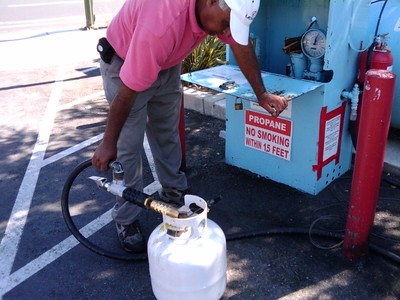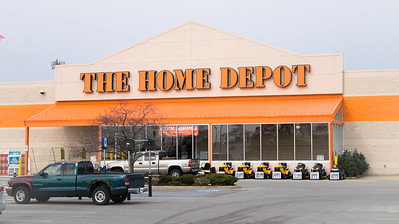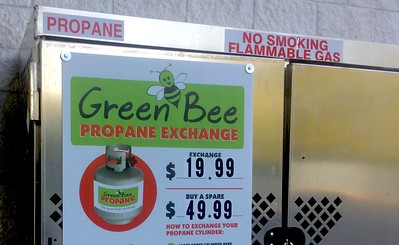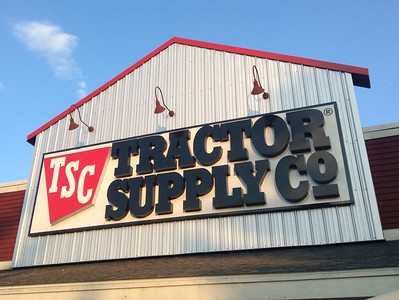
The limit on exchanging propane tanks at one time can depend on a variety of factors, such as the store or service provider’s policies, safety regulations, and supply availability. In order to maintain a safe environment and meet regulatory requirements, many locations may impose limits on the number of propane tanks you can exchange.
Safety concerns play a significant role in determining the limit on propane tank exchanges. Propane is a flammable gas, and mishandling or improperly storing propane tanks can result in dangerous situations. To mitigate risks, stores and service providers often have safety protocols in place, which may include limiting the number of tanks a customer can exchange at one time. This helps to ensure that customers and employees can safely handle and transport the tanks.
Another factor that may influence the limit on propane tank exchanges is the need to maintain adequate supply levels for other customers. Propane is used for various purposes, including heating, cooking, and fueling vehicles. Stores and service providers need to ensure that they can meet the demands of all their customers, and imposing limits on exchanges helps to maintain a consistent supply.
Additionally, some stores or service providers may have specific policies related to the management of their propane tank inventory. These policies can be influenced by factors such as the size of the store, the available storage space, and the frequency of deliveries from propane suppliers. Limiting the number of tanks that can be exchanged at once may help the store or service provider maintain a more manageable inventory level.
To determine the specific policy of a store or service provider, it is best to contact them directly. This will allow you to obtain accurate information about their propane tank exchange policies, including any limits on the number of tanks you can exchange at one time. You can typically find contact information for the store or service provider on their website, or by calling their customer service department.
Keep in mind that even if a specific location does not have a limit on the number of propane tanks you can exchange at one time, it is still important to follow safety guidelines and recommendations for transporting and storing propane tanks. This includes ensuring that tanks are properly secured during transportation, keeping tanks away from heat sources or open flames, and storing tanks in a well-ventilated area.
The Number of Tanks You Can Exchange is Covered by Local Regulations
The number of propane tanks that can be exchanged at one time may be covered by state regulations in some areas. Propane tank exchange is regulated at the state level in the United States, which means that the rules and requirements may vary from state to state.
Some states may have specific regulations on the number of propane tanks that can be stored or exchanged on a property, or may require special permits or licenses for propane tank exchange operations. For example, some states may limit the number of tanks that can be exchanged per customer or per day, while others may have restrictions on the types of tanks that can be exchanged.
It’s important to check with your state government or regulatory agency to see if there are any specific regulations or requirements related to propane tank exchange in your area. Additionally, exchange locations may have their own policies or limits on the number of tanks that can be exchanged, so it’s always a good idea to check with the exchange location beforehand to see what their policies are.
Exchange Limits May Vary by Location
In addition to potential local regulations, exchange locations may also have their own policies or limits on the number of propane tanks that can be exchanged at one time. These policies may vary based on factors such as the size of the exchange location, the number of staff available to handle exchanges, and the availability of tanks for exchange.
Some exchange locations may have limits on the number of tanks that can be exchanged per customer, per day, or per transaction. For example, an exchange location may limit customers to exchanging no more than four tanks at a time, or may require customers to make multiple transactions if they need to exchange more than a certain number of tanks.
However, some exchange locations may offer bulk exchange programs or other special promotions that allow customers to exchange larger numbers of tanks at once. These programs may offer discounts or other incentives for exchanging multiple tanks, and can be a convenient option for customers who need to exchange large quantities of tanks.
It’s important to check with the exchange location beforehand to see what their policies are on tank exchange, including any limits or restrictions that may be in place. By doing so, you can ensure a smooth and efficient exchange process while also staying in compliance with any local regulations or requirements.
Take Note of the DOT Regulations When Transporting Propane Tanks
Here are some of the key DOT regulations to keep in mind when transporting propane tanks:
- Tanks must be properly secured: Propane tanks must be secured in a way that prevents them from shifting or rolling during transport. This may require the use of straps, chains, or other tie-downs.
- Tanks must be properly labeled: Propane tanks must be labeled with the contents, the name and address of the supplier, and the date of manufacture.
- Tanks must be properly filled: Propane tanks must be filled to no more than 80% of their capacity to allow for expansion of the gas.
- Tanks must be inspected before transport: Before propane tanks are transported, they must be inspected for leaks, damage, and other issues that could compromise their safety.
- Vehicles must be properly equipped: Vehicles used to transport propane tanks must be equipped with appropriate safety equipment, such as fire extinguishers and emergency spill kits.
- Drivers must be properly trained: Drivers who transport propane tanks must be trained in the safe handling and transport of hazardous materials.
- Transportation documentation must be kept: Documentation must be kept of the transport of propane tanks, including information on the type and quantity of tanks being transported, the route taken, and the date and time of transport.
It’s important to follow these regulations carefully to ensure the safe transport of propane tanks. Violations of DOT regulations can result in fines, penalties, and even criminal charges in some cases.
Conclusion
The answer is not straightforward, as there is no universal limit to the number of propane tanks that a person can exchange at one time. However, some retailers or locations may have their policies and restrictions on the number of tanks that can be exchanged at once, so it’s essential to check with the retailer beforehand.
For example, some retailers may have a limit of two or three tanks per exchange. This limit may be due to the retailer’s storage capacity, safety regulations, or convenience for other customers. Some retailers may also require customers to have their tanks inspected before they can exchange them, which may limit the number of tanks a customer can exchange at once.
It’s also important to note that some propane tanks may be larger or heavier than others, which may make it difficult to exchange multiple tanks at once. Transporting multiple tanks at once also requires proper handling, storage, and transportation, so it’s crucial to follow all safety guidelines when handling propane tanks.
While there is no universal limit to the number of propane tanks that a person can exchange at one time, it’s essential to check with the retailer beforehand and follow all safety guidelines when handling propane tanks. By doing so, you can ensure a smooth and safe propane tank exchange experience, regardless of the number of tanks you need to exchange.

Jeremy is a highly experienced professional propane technician with over 21 years of experience in the industry. Throughout his career, he has gained extensive knowledge and expertise in propane gas installation, maintenance, and repair, as well as in ensuring safety and compliance with industry standards. Mike has worked with various residential, commercial, and industrial clients, providing top-notch services and solutions to meet their propane needs. He is dedicated to his craft and passionate about delivering exceptional service to his clients.



